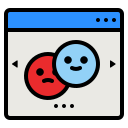Step-by-Step Guide to Building Apps Without Coding
Why No‑Code, Why Now
When Maya built a neighborhood volunteering app over a weekend, she wasn’t a developer—she was a nurse with a problem to solve. No‑code tools let her prototype, test sign‑ups, and inspire helpers without touching a single line of code.
Why No‑Code, Why Now
Visual builders compress months of effort into days, helping you validate faster and learn by doing. You’ll design screens, connect data, and automate tasks while focusing on user needs instead of syntax or frameworks.
Why No‑Code, Why Now
Write down one real problem you want to solve this week. Then commit to building the simplest version in no‑code. Share your idea below, subscribe for weekly prompts, and we’ll cheer you through each step.
Choose the Right No‑Code Platform
Know the landscape before deciding
Some tools excel at web apps and complex logic, others shine for mobile layouts, directories, or internal dashboards. Map features like databases, permissions, integrations, and responsive design to your must‑haves before committing.
Match platform strengths to your goal
For a marketplace, prioritize user roles, listings, and payments. For an internal tool, emphasize data views, permissions, and automation. For a community, consider memberships, profiles, and notifications that encourage engagement.
Evaluate community, templates, and support
A strong ecosystem shortens your learning curve. Look for tutorials, templates, and active forums. Ask questions, search examples, and subscribe here for platform comparisons and checklists tailored to your no‑code journey.
Plan Your App with Clarity
Use simple statements like, “As a volunteer, I want to see nearby tasks so I can help quickly.” These stories keep features purposeful and make every design decision easier and more aligned with real needs.
Plan Your App with Clarity
Draw how a user moves from sign‑up to success. A pencil sketch or quick wireframe saves hours later. Clarify inputs, outputs, and edge cases, then translate those steps into pages and workflows inside your chosen builder.


Design Interfaces Without Code
Keep layouts predictable and kind
Use consistent spacing, clear headings, and obvious buttons. Align forms in a single column, label fields plainly, and highlight primary actions. Small choices like readable contrast and generous tap targets make big differences.
Build reusable components and styles
Create a button style once, then reuse it across screens. Define color tokens and text styles early. This approach speeds building, reduces errors, and helps your app feel professional from the very first version.
Prototype interactions to learn fast
Link screens, add simple transitions, and click through like a user. One founder realized a hidden menu buried key actions; a quick redesign lifted completion rates. Share your wireframes, and subscribe for honest design critiques.
Data, Logic, and Automations
Design a database that mirrors real life
List your core objects—Users, Tasks, Messages—and define relationships clearly. Name fields consistently, avoid duplicates, and think through permissions. Good structure makes future features easier, safer, and dramatically more maintainable.
Translate steps into visual workflows
Trigger actions on button clicks, form submissions, or schedule intervals. Send confirmations, update records, and route notifications. Visual logic helps you reason through each step, spot gaps, and improve reliability without code.
Automate across your tool stack
Connect spreadsheets, email, and chat to keep teams in sync. Route new sign‑ups to your CRM, log errors to a tracker, and archive data safely. Comment which process you most want automated, and we’ll share examples.
Test, Iterate, and Validate
Invite five to ten people who feel the problem. Give them a simple task and watch quietly. Their pauses, confusions, and shortcuts will reveal what to fix long before you scale to hundreds of users.
Test, Iterate, and Validate
Track activation steps, time to first success, and drop‑off points rather than vanity metrics. Combine heatmaps, session notes, and short surveys to pinpoint friction. Iterate weekly, then share your learnings with the community here.


Launch, Onboard, and Grow
Start with a shareable web link and a clear landing page. Explain the problem, show a screenshot, and include a quick demo video. Early clarity builds trust and encourages sign‑ups from your earliest curious visitors.
